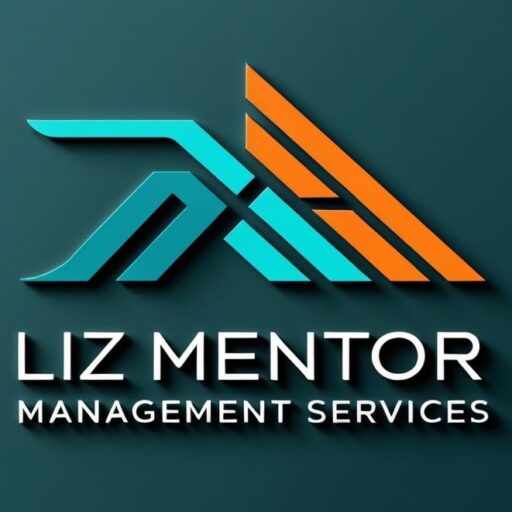Risk Management Strategies – Turning Uncertainty into Opportunity
In business, risk is not just inevitable—it’s constant. Every decision, every project, and every strategy comes with a measure of uncertainty. Some risks are obvious, like market volatility or supply chain disruptions. Others are subtle, hidden within complex operations or interpersonal dynamics. Yet, how an organization approaches these risks often defines its success or failure. Module Four of the Business Acumen course, “Risk Management Strategies,” provides essential tools to help professionals identify, evaluate, and manage risk effectively, turning uncertainty into a competitive advantage.
Understanding Risk in Business
Risk is often perceived negatively, as something to avoid at all costs. While some risks should be mitigated or eliminated, others are opportunities in disguise. Recognizing the difference between harmful risks and calculated risks is the first step toward effective risk management.
For instance, launching a new product in an untapped market might seem risky due to uncertain demand. However, thorough research, strategic planning, and scenario analysis can transform this risk into an opportunity for growth. Professionals who develop a risk-savvy mindset don’t fear uncertainty—they manage it proactively.
Continuous Assessment: The Heart of Risk Management
A core principle of risk management is continuous assessment. Businesses operate in dynamic environments, and risks evolve constantly. Market trends, regulatory changes, technological advancements, and competitive actions all introduce new variables.
Continuous assessment involves regularly reviewing processes, monitoring key indicators, and staying informed about internal and external developments. This vigilance allows professionals to spot emerging risks early, respond promptly, and adjust strategies before small problems escalate into major crises. Risk is not static, and neither should your approach to it be.
Balancing Internal and External Factors
Effective risk management requires considering both internal and external factors. Internal factors include organizational culture, operational processes, financial health, and workforce capabilities. External factors encompass market conditions, regulatory requirements, customer behaviors, and global events.
A business might have strong internal processes, but ignoring external threats—like a competitor’s disruptive innovation—can leave it vulnerable. Conversely, understanding external risks without evaluating internal capacity can lead to unrealistic strategies. The key is balance: assess how internal strengths and weaknesses interact with external threats and opportunities to make informed decisions.
Making Adjustments and Corrections
No risk management plan is perfect from the outset. The ability to adapt and correct course is critical. This flexibility requires a proactive mindset, readiness to pivot, and willingness to learn from both successes and setbacks.
For example, if a marketing campaign underperforms, rather than abandoning the initiative entirely, leaders can analyze the data, identify underperforming channels, and adjust messaging or targeting. Small, informed adjustments prevent bigger failures and ensure continuous improvement. In essence, risk management is an ongoing cycle of action, evaluation, and adaptation.
Knowing When to Pull the Trigger or Plug
One of the most challenging aspects of risk management is deciding when to take action. Waiting too long can allow risks to grow; acting too hastily can cause unnecessary disruption. Professionals who master this balance combine data-driven insights with strategic intuition.
Pulling the trigger means taking decisive action when the potential upside outweighs the risk, such as launching a new product or entering a new market. Plugging refers to halting or mitigating actions when risk becomes unmanageable, like pausing a project that lacks sufficient resources or viability. Effective risk managers know that timing and context are as important as the decision itself.
Case Study: Transforming Risk into Opportunity
Consider a mid-sized tech company facing declining product adoption due to evolving customer preferences. A reactive approach might involve cutting costs or withdrawing the product line, but a risk-aware perspective identifies a different path. By analyzing customer feedback, market trends, and competitor activity, the company discovers an opportunity to pivot features and enhance user experience.
Implementing these adjustments transforms the potential risk of losing market share into a growth opportunity, increasing customer satisfaction and strengthening competitive positioning. This example illustrates how thoughtful risk management turns uncertainty into a catalyst for innovation and success.
Strategies for Effective Risk Management
To cultivate a robust risk management approach, professionals can adopt several strategies:
Risk Identification: Regularly scan operations, markets, and processes to identify potential threats. Engage team members across departments to uncover hidden risks.
Prioritization: Not all risks are equal. Evaluate the probability and impact of each risk to determine which require immediate attention and which can be monitored.
Mitigation Planning: Develop strategies to reduce the likelihood or impact of significant risks. This might include contingency plans, diversifying resources, or investing in technology and training.
Monitoring and Review: Establish key metrics and indicators to track risks over time. Regularly review plans and update them as circumstances change.
Communication: Risk management is a team effort. Clear communication ensures all stakeholders understand potential risks and their roles in addressing them.
These strategies, when implemented consistently, create a culture of awareness and preparedness that strengthens the organization from top to bottom.
The Organizational Advantage
Organizations that embrace risk management gain several advantages. They are more agile, better prepared for unexpected challenges, and able to capitalize on opportunities that risk-averse competitors may miss. Employees in such organizations feel empowered and informed, as risk is no longer a source of fear but a shared responsibility guided by clear processes.
By integrating risk management into decision-making, leaders ensure that strategies are resilient, resources are optimally allocated, and the business is positioned to navigate both turbulence and growth successfully.
Conclusion
Risk is an inevitable part of business, but it is not a threat to be feared. Module Four of the Business Acumen course, “Risk Management Strategies,” equips professionals with the mindset, tools, and techniques to navigate uncertainty with confidence. By continuously assessing risks, balancing internal and external factors, making timely adjustments, and fostering a proactive culture, businesses can convert potential setbacks into opportunities for innovation and growth.
Mastering risk management enhances strategic decision-making, strengthens organizational resilience, and provides a competitive edge. Professionals who embrace these strategies not only protect their organizations but also advance their own careers by demonstrating foresight, judgment, and leadership in the face of uncertainty.



